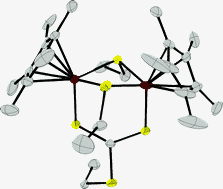Insertion reactions of CS2, COS, and PhNCS at thiolate-bridged diiron centers†
Abstract
Treatment of [

- This article is part of the themed collection: Bioinspired catalysis
* Corresponding authors
a
State Key Laboratory of Fine Chemicals, School of Chemical Engineering, Dalian University of Technology, Dalian, P. R. China
E-mail:
Qujp@dlut.edu.cn, Qujp@chem.dlut.edu.cn
Fax: +86-411-8363-3080
Treatment of [

 Please wait while we load your content...
Something went wrong. Try again?
Please wait while we load your content...
Something went wrong. Try again?
Y. Chen, Y. Peng, P. Chen, J. Zhao, L. Liu, Y. Li, S. Chen and J. Qu, Dalton Trans., 2010, 39, 3020 DOI: 10.1039/B920144K
To request permission to reproduce material from this article, please go to the Copyright Clearance Center request page.
If you are an author contributing to an RSC publication, you do not need to request permission provided correct acknowledgement is given.
If you are the author of this article, you do not need to request permission to reproduce figures and diagrams provided correct acknowledgement is given. If you want to reproduce the whole article in a third-party publication (excluding your thesis/dissertation for which permission is not required) please go to the Copyright Clearance Center request page.
Read more about how to correctly acknowledge RSC content.
 Fetching data from CrossRef.
Fetching data from CrossRef.
This may take some time to load.
Loading related content
